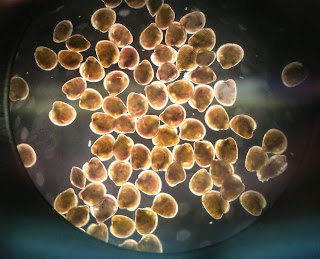On the rocks
It started a few weeks ago. I was sitting around my kitchen table with friends, sipping wine and chatting after dinner. Wood Neck Beach "Hey Kirstin," my friend and fellow postdoc, Cassidy, called from across the table, "Can you recommend a good field guide for the New England intertidal? I need to get familiar with the local organisms this summer." To my left, my boyfriend almost snorted. "Cassidy," he informed her, "Kirstin is a field guide to the intertidal. Just take her with you!" So she did. Yesterday after work, Cassidy and I headed out to Wood Neck Beach, just north of Woods Hole. Unlike most beaches on the Cape, Wood Neck is covered in rocks of all sizes - gravel, cobbles, boulders. We went at low tide so we could see the organisms when they were exposed. Semibalanus and Littorina on a rock on Wood Neck Beach The main organism we saw was the northern rock barnacle, Semibalanus balanoides . Barnacles are especially
